
A Freightliner car cover will be the “ultimate shield” you should think of first when you’re serious about protecting your truck, especially as weather conditions and parking habits across the U.S. vary from state to state and route to route. Unlike passenger cars, Freightliner tractors work outdoors for long hours, run through multiple climate zones, park in windy yards, dusty industrial sites, coastal ports with sea mist, high plains with ice and snow, and desert heat. Because of that harsh mission, many drivers and fleet owners both fear a bulky, hard-to-handle car cover and worry that the truck ages quickly when it sits in long rain, harsh sun, or snow and when day-night temperature swings make the cab alternately hot at noon and bitterly cold at dawn. Staying true to the title, this article shows why a truly “convenient and durable” Freightliner car cover with the ability to resist snow, block UV, shed rain, and protect the tractor effectively is not just an accessory but an operating solution that reduces care costs, cuts downtime, and preserves fleet value over the long term.

Related Articles: Compact and durable, rain resistant, strong UV protection, effective cabin cooling
tractors travel many regions, why a “multi-purpose” cover is necessary
A sedan might spend most of its life in a home garage, but a Freightliner tractor practically lives outdoors. Today it parks at a domestic depot with fine dust; tomorrow it picks up at a port where night sea mist soaks everything; next week it enters the Snow Belt to face snow and road salt; then it returns to the Sun Belt and sits for hours in midday sun at an office lot. Each environment is a separate test for paint, glass, matte-black plastics, chrome trim, door seals, and interior. UV strips depth from paint and fades plastics. Prolonged rain creates trapped moisture and mineral spotting. Strong winds drive dust, sand, and industrial ash into every seam. Snow and road salt left in place bring musty odors and encourage light corrosion at metal edges. Meanwhile the cab can feel scorching when you open it at noon and freezing enough at dawn that you idle just to warm it up.

The pain does not come from a single big event. It comes from many ordinary moments: the driver rests 30 to
60 minutes in harsh sun; a winter morning steals 15 to 20 minutes scraping a thick windshield frost; a couple of weeks parked near the ocean already etch salt tracks on large glass; one summer later the matte-black plastics look chalky and the chrome loses luster. The “small but not small” costs start to stack up: more washes, earlier paint correction, replacing plastics and seals, repairing lamps and sensors that suffered from moisture. The solution is not a cover that is “as thick as possible” or “sealed as tight as possible.” It is a system solution that works on the right mechanisms: breathability so moisture can escape, an ultra soft liner so repetitive contact does not become sandpaper, custom fit to stop wind puffing, and UV reflection, rain beading, snow protection that use a beading mechanism. Above all, a convenient design lets you deploy quickly even when you only stop briefly.
Related Articles: Fisker car cover: Soft liner, protecting the solar-integrated glass roof on Fisker
“Bulky car cover”: why it happens and how to turn it into daily convenience
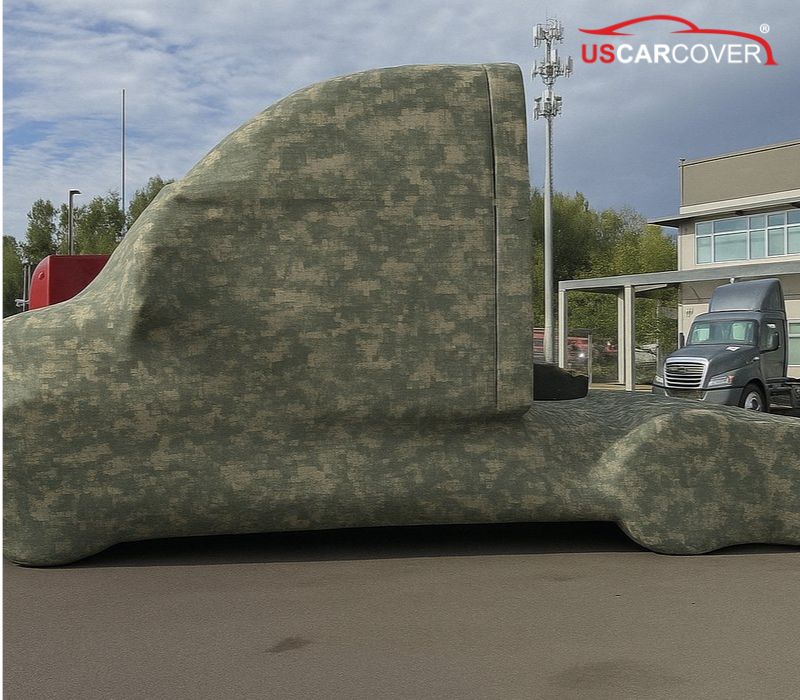
The bulky feeling usually stems from two roots: excess dimensions and a lack of reference points. On a tractor, with a tall roof fairing, protruding hood mirrors, and a large front fascia, a “generic size” tarp almost certainly leaves extra fabric somewhere. A breeze only needs to slip underneath to create hollow pockets, the cover flaps, and the user pulls sideways to “straighten it,” accidentally creating repetitive friction on paint edges, glass edges, and chrome. If the fabric is thick but not breathable, rain or dew leads to moisture trapped between liner and surface, producing a musty smell and mineral rings. The less you want to wash it, the less you use it, and the loop repeats.
Breaking that loop requires ergonomic design: a clearly identifiable nose so you set direction instantly, mirror pockets sewn to the hood-mirror locations so two large “anchors” lock the position in one move, a proper tail drop so there is no stretch, elastic hems that hug the lower edges, and underbody straps that transfer load to the frame and stabilize the cover in crosswinds. With that “skeleton” in place, the workflow shrinks to four smooth beats: set the nose, align mirrors, let the fabric fall evenly, secure. Fold the cover compactly into a breathable bag, carry it like a canvas tote, and “bulky” disappears, replaced by “grab-and-use.” This is the key to making a Freightliner cab cover useful for short stops and a full tractor cover ready for long parking.

Related Articles: Fiat car cover: Should you choose Full cover or half cover for Fiat
Strong UV: the real damage mechanism and why a UV resistant truck cover is mandatory
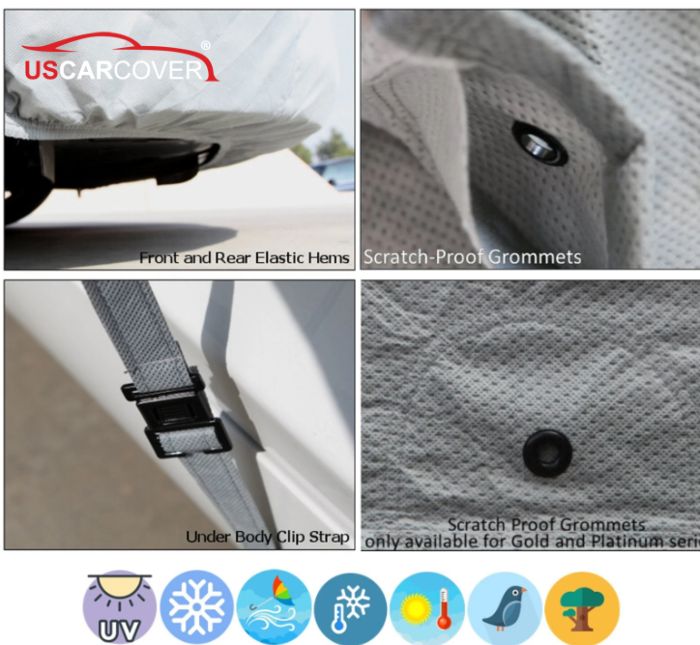
UV makes no noise but causes “silent aging.” On a Freightliner body, UV robs paint depth, chalks matte-black plastics, dries seals, and dulls chrome. Inside the cab, UV combined with heat accelerates aging of vinyl, plastics, and leather, while screens and controls endure repeated expansion and contraction cycles and some adhesives lose strength. If you often park during peak sun hours, typically 11 a.m. to 3 p.m., cumulative effects are stronger than if exposure is scattered.
A true UV resistant truck cover is not just “thick.” It needs high solar reflectance to cut most of the energy before it reaches paint and glass, and it must also be breathable so vapor does not get trapped. When the outer face is finished to bead water so it rolls off large panels, you reduce the time that wetness is pressed against paint and glass. Over time, the clear coat preserves natural gloss, matte blacks do not chalk as quickly, chrome maintains brightness, and the interior resists cracking and fading. All of that becomes lower maintenance cost and better resale value.
From a technical angle, UV-A penetrates clear coat and drives oxidation, while UV-B embrittles and fades surface polymers. A cover with a high solar reflectance index reduces surface temperature at the “front door,” while the ultra soft liner protects if micro movement occurs. That is why search phrases such as UV resistant truck cover, protect Freightliner paint, protect chrome trim, and protect cab interior show up frequently in satisfied user experiences.
Related Articles: Ferrari Car Cover: Custom-fit, scratch-resistant, breathable, safe for paint
Prolonged rain and trapped moisture: manage water correctly to avoid spotting

If UV is the “burner,” trapped moisture is the “soaker.” After rain, mineral-laden water pressed between liner and surface leaves rings. Left for long, it breeds a musty odor and may encourage light corrosion at metal edges, fasteners, and glass surrounds. On the large Freightliner windshield, “mineral flow lines” are even more visible because of surface area and shallow angle. A tarp that is sealed like plastic film is not “great water protection,” it is “great at holding moisture."
The right material must be micro-porous and breathable so vapor can diffuse outward sustainably, while the outer layer is water resistant through beading so rain rolls off instead of soaking the entire surface. As day-night temperatures swing, that breathable layer lets the surface “breathe,” cutting the greenhouse effect between liner and paint or glass. In coastal settings, salt is highly hygroscopic. If you shake the outer face before folding, the fine salt you carry into the bag drops sharply, which reduces “carried-over” moisture in the next session. That is how a breathable car cover delivers real value: keeping things dry over weeks and months rather than being dry “for a moment."
Related Articles: Bentley car cover: luxury, quality, finesse even while the car is covered
Snow and road salt protection: why a full cover is “armor” for long parking
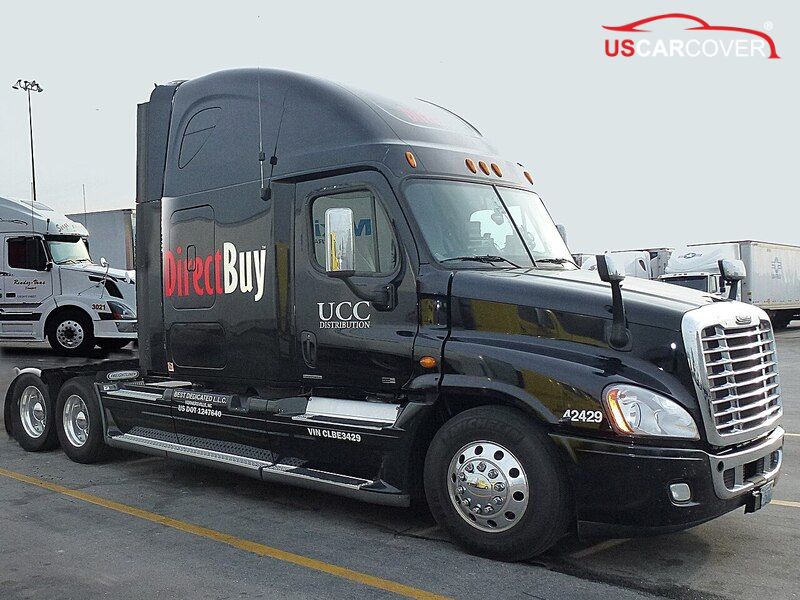
The Snow Belt is the toughest test. Snow build-up loads fabric edges, and road salt both attracts moisture and reacts with metal when it sits at exposed edges. Ice on glass makes mornings a cycle of scraping, spraying, and waiting for thaw, which wastes time and can leave faint marks if you rush. A full tractor cover with breathable fabric, custom fit, and underbody anchoring envelops the whole body, blocking sea-salt-like crosswinds from coating the sides and reducing direct snow contact with large panels. That means thinner ice formation on glass, if any. When you peel the cover off in the morning, there is less to scrub, and you shorten your start-of-day routine.
Areas such as wheel-arch crowns, roof fairing edges, and chrome face and emblem easily collect salt. When the whole body is covered, the salt that sticks is much less. Over the long term, the “white road-salt tracks” on matte plastics and chrome edges appear far more slowly. This is why snow resistant truck covers and full tractor covers are the natural pair whenever you talk about storing a tractor overnight through winter.
Related Articles: Dual-Ghia car cover for long-term storage: quick-dry, no musty odor, no soft-top mildew
Lowering and retaining cabin temperature: more comfort, less fuel for A/C and heat
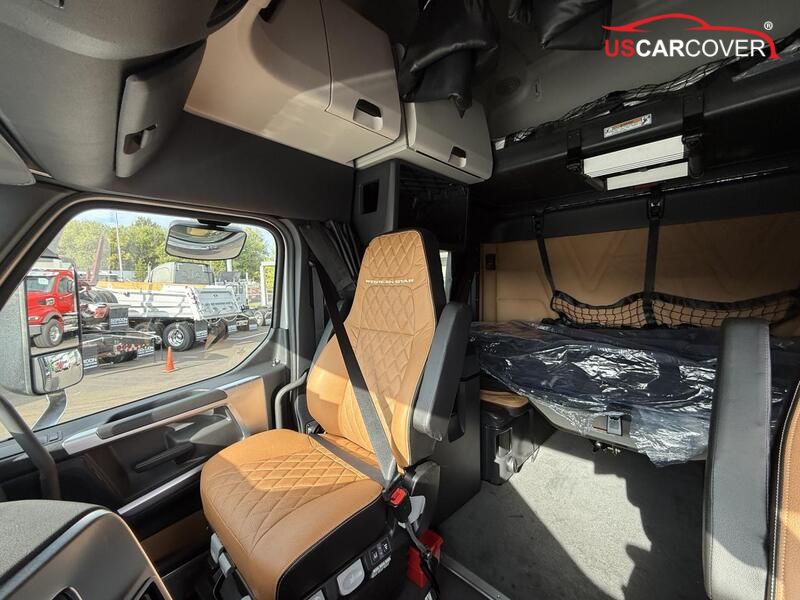
Cab temperature directly affects health and driving performance. A noon door-open blast breaks concentration, while a freezing morning forces extra idling just to warm up. A Freightliner cover that properly shields the large windshield and roof creates shade and a thin air buffer between fabric and surface, which slows heat gain in summer and reduces heat loss in winter. You will notice the steering wheel, seats, and dash are less scalding in summer, and in winter you do not need to run the engine as long to reach a comfortable temperature.
At fleet scale, trimming even a few minutes of idle time per session for cooling or heating accumulates into significant fuel savings. It also helps reduce emissions and quiet the yard. This is a double benefit many fleet owners overlook when first considering a cover, but after a season it often shows clearly in the numbers.
Related Articles: How To Protect Your Eagle: Compact tools that matter in your car
Custom fit and aerodynamic stability: stop repetitive friction, keep paint, glass, and chrome safe

Fine swirl marks do not come from big hits. They come from small, repeated movements between fabric and surface. Tractors have many sensitive “high points”: hood mirrors, hood edges, A pillars, large arch crowns, chrome face and grille, and roof fairing edges. An oversized tarp creates a wind cavity under the fabric; the cover then “dances” and repetitive friction appears. A custom fit Freightliner cover fixes the root cause: correctly placed mirror pockets secure two major anchors, a proper tail drop spreads load evenly, elastic hems stop wind intrusion, and underbody straps channel forces into the frame to reduce flutter. When the cover stays put, the ultra soft liner can actually protect, and any remaining grit has far fewer chances to be dragged into a mark.
Geometry varies widely by model: Cascadia with its tall aero fairing, M2 as a box-truck style cab, 108SD/114SD working construction sites with mud and dust, day cab shorter and sleeper longer with more surfaces around the bunk. That is why “one size fits all” is a costly compromise. Custom fit by model, year, and configuration lets the cover truly “hug the shape” and remain aerodynamically stable.
Materials and build: ultra soft liner, recessed seams, soft hems, and a beading outer face

A scratch resistant truck cover starts with the liner. A proper liner feels velvety, does not bleed dye when damp, and does not stiffen over time. On a tractor, the liner touches a large windshield, chrome trims, reflective safety decals, and matte plastics. If the liner is coarse or poorly dyed, the risks of discoloration and micro-marring increase. Recessed stitching removes hard ridges at contact edges. Soft hems keep the cover’s border from becoming a sharp edge against paint or glass. On the outside, the trio of UV resistance, water resistance by beading, and breathability solves sun, rain, and moisture together.
Reinforcements such as strap anchor points, adjusters, and overlapped seam construction in load zones matter as well. They help the cover stand up to wind and resist distortion after many seasons. As for fabric mass, “thick” does not equal “durable” if there is no breathability. A smart construction with balanced fiber density often outlasts and outperforms a purely “thick and sealed” approach.
Related Articles: How to Protect Datsun from Harsh Sun and UV: keep paint and interior looking new
Quantified benefits for owners and fleets
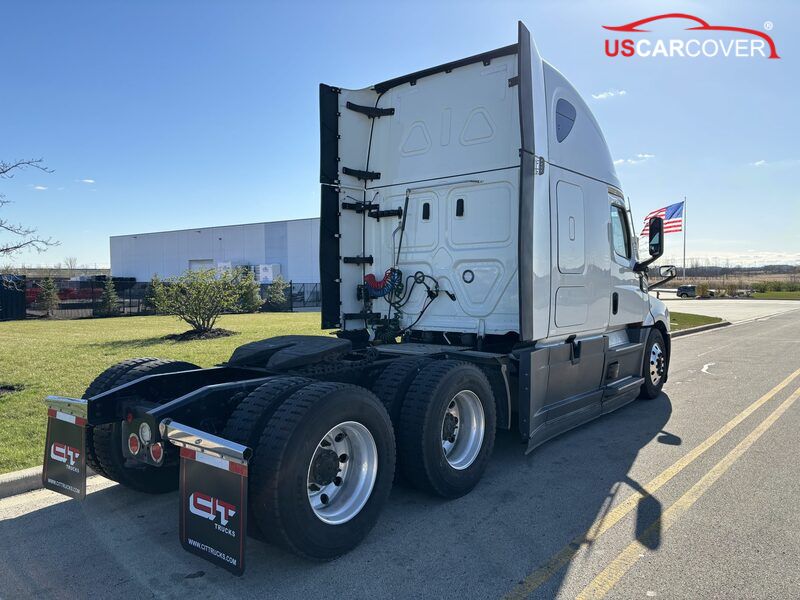
At the individual level, skipping one or two emergency washes because vertical fallout was blocked, halving the time to vent a hot cabin each day, and stretching the cycle for dressing plastics and chrome all put money back in your pocket. At fleet scale, the benefits add up. Suppose each truck cuts idle time by 10 minutes a day for cooling or heating. Over 300 operating days, that is 50 hours of engine time not spent burning fuel. Multiply by the number of tractors and the fuel and wear savings become significant. On top of that, keeping surfaces in good condition delivers better resale value. If each unit sells for even a few percent more at disposition, the 3 to 5 year recovery is compelling.
Do not forget downtime. On cold mornings, skipping heavy windshield scraping helps drivers leave on time. At noon in summer, a cooler cabin gets drivers back to work sooner and sharper. Productivity rises thanks to these “small moments,” even if they are hard to measure immediately.
FAQ

Does a cab cover suffice for a 1 to 2 hour midday stop
- In most cases, yes. A cab cover shields the large windshield and cab roof, lowers heat quickly, and blocks pollen, sap, and droppings that fall straight down. For long or overnight parking, switch to a full cover for whole-body protectionIn most cases, yes. A cab cover shields the large windshield and cab roof, lowers heat quickly, and blocks pollen, sap, and droppings that fall straight down. For long or overnight parking, switch to a full cover for whole-body protection
Does a cover interfere with pre-trip inspections or heat up the engine
- Covers are for parked trucks. Before departure, remove the cover and perform your inspection as usual. A quick-on, quick-off design will not delay your workflow.
Can one cover handle all climates
- A quality multi-purpose cover can work across regions as long as it is breathable, UV resistant, water beading, and custom fit. Real value comes from adapting usage to the situation, short stop or long parking.
Shopping guidance: choose the right cover for Freightliner in the U.S.

When searching for a Freightliner car cover, prioritize core factors: custom fit for model-year-configuration (Cascadia, M2, 108SD/114SD, Columbia/Coronado, day cab, sleeper), breathability to manage moisture correctly, UV resistance to slow surface aging, water resistance through beading so spotting is minimized, an ultra soft liner to protect paint, glass, and chrome, recessed seams and soft hems to avoid hard ridges, and underbody straps to stabilize airflow outdoors. At US Car Cover, you can search by line, year, and variant to select a custom fit Freightliner cover that matches the silhouette, consider a Freightliner cab cover for short stops, and a full tractor cover for longer storage. Choosing correctly from the start helps drivers work faster, keeps your cover inventory organized, and maximizes protection across diverse U.S. climates.

If you view a Freightliner tractor as an asset that labors outdoors at high intensity, you will see that Freightliner car cover that is “convenient and durable, snow resistant, UV resistant, rain resistant, and effective at protecting the tractor” is not a slogan but a system composed of the right materials (breathable, beading, UV reflective), the right finishing (ultra soft liner, recessed seams, soft hems), the right geometry (custom fit, underbody anchoring), and a convenient experience (smart reference points, compact fold, quick handling). With that system in place, windy yards, salty coasts, desert heat, and Snow Belt winters all become manageable contexts rather than risks left to chance. The result is preserved exterior condition, a more comfortable cabin, lower maintenance cost, shorter downtime, and fleet value that holds across the years. If you have avoided covers because they felt “bulky,” try a truly custom fit design. After a few days you will find covering and removal as natural as pulling on well-fitted gloves, and what remains is peace of mind each time you look at your Freightliner kept clean and ready for the next leg.
